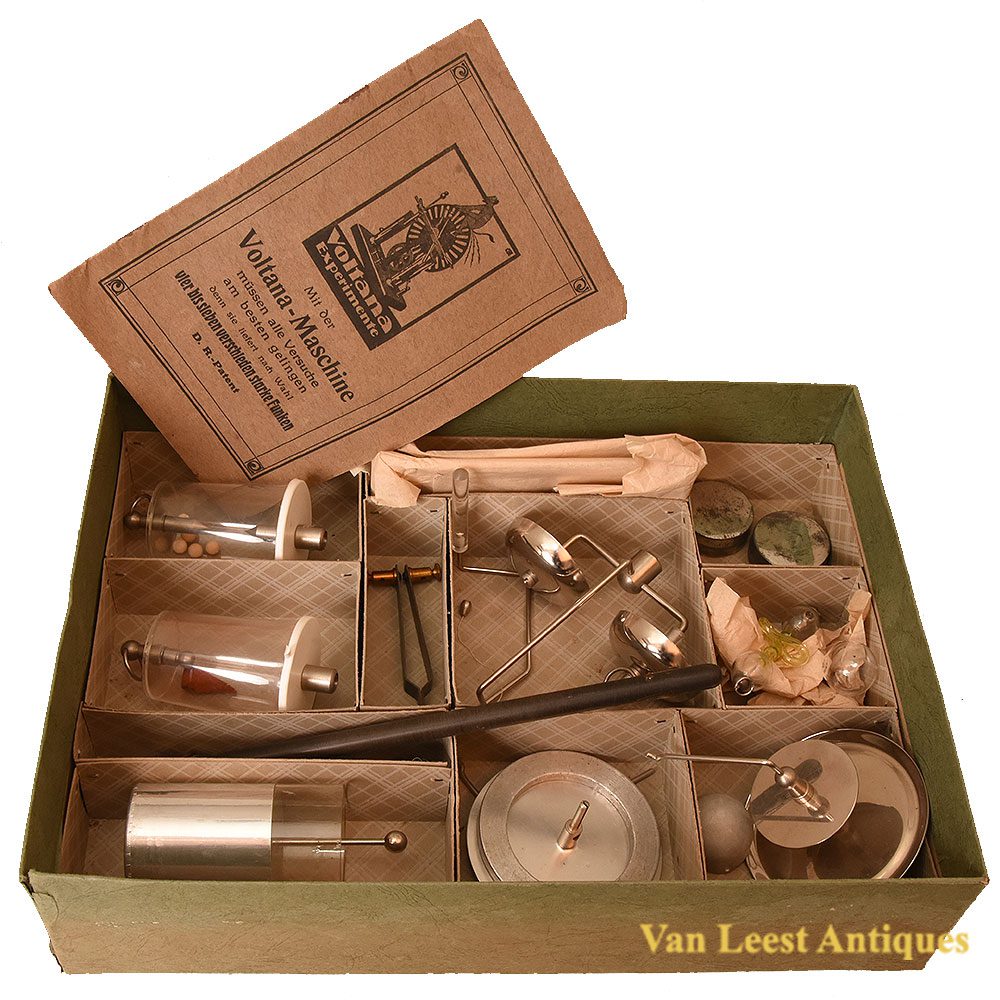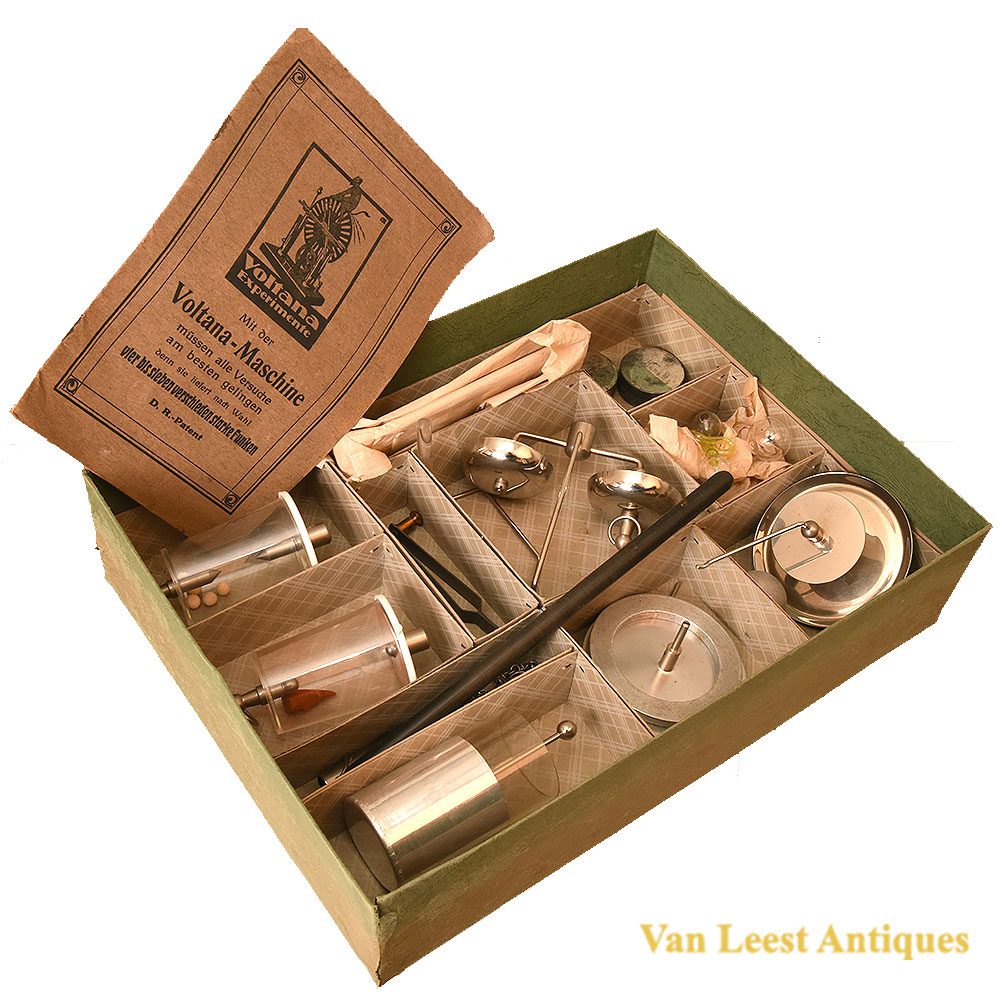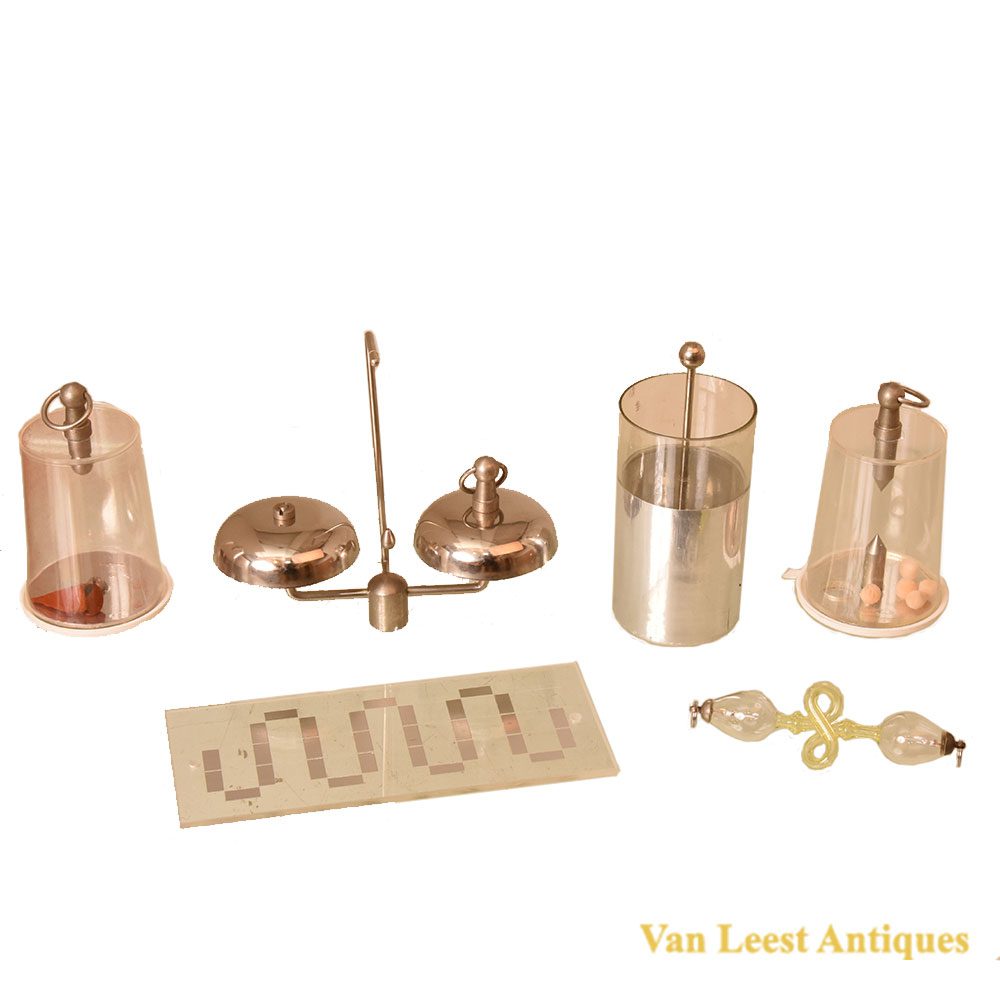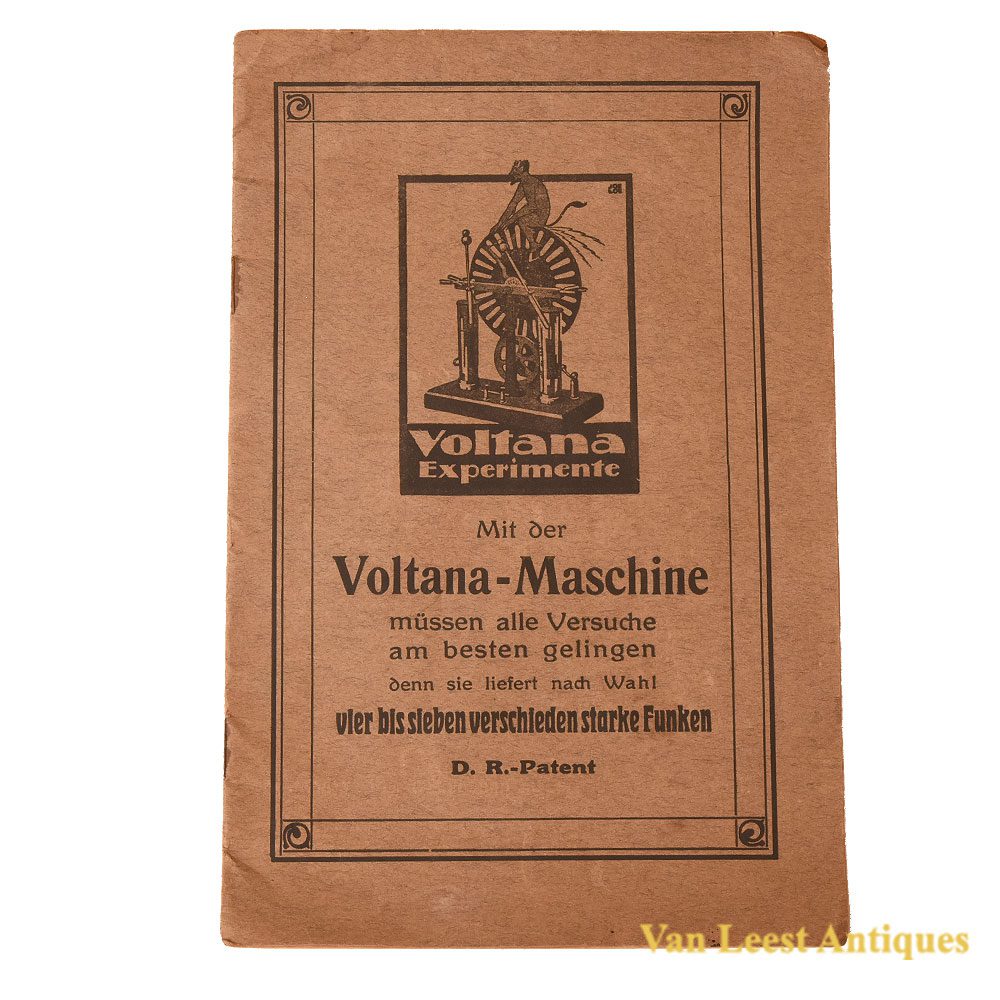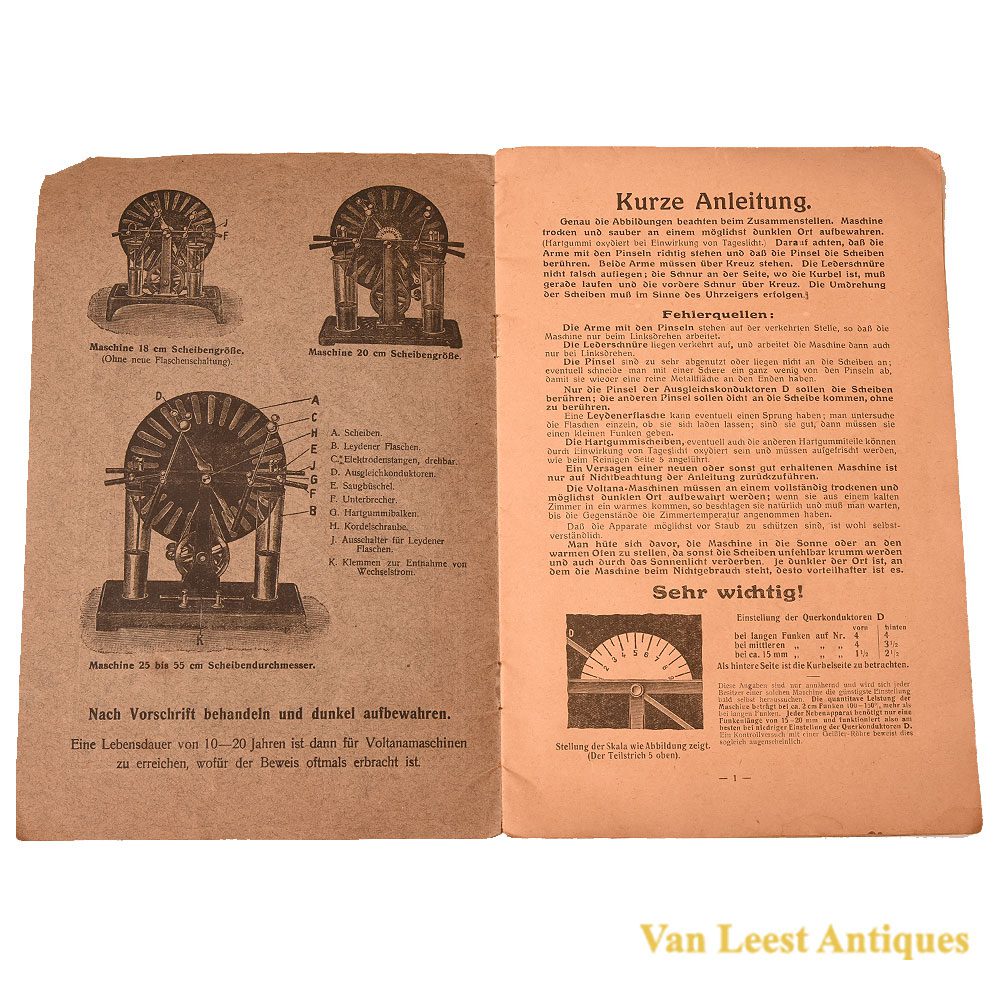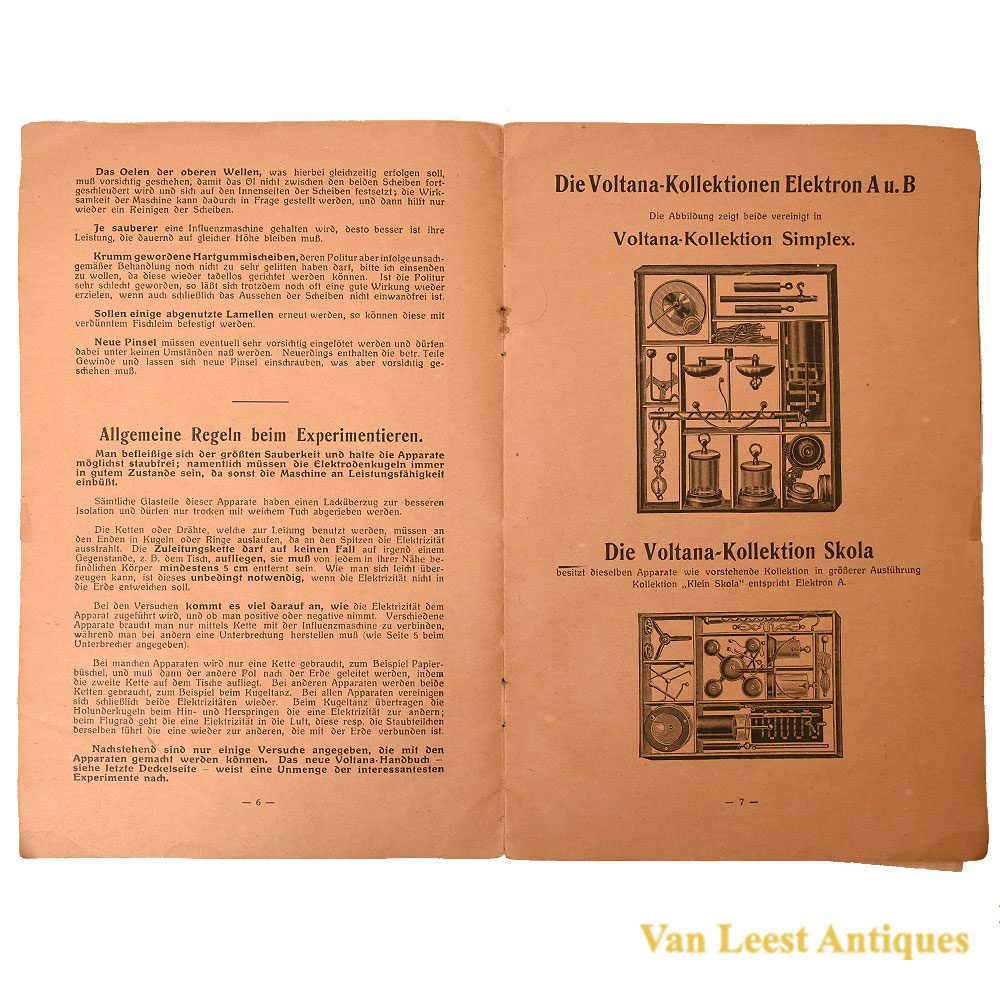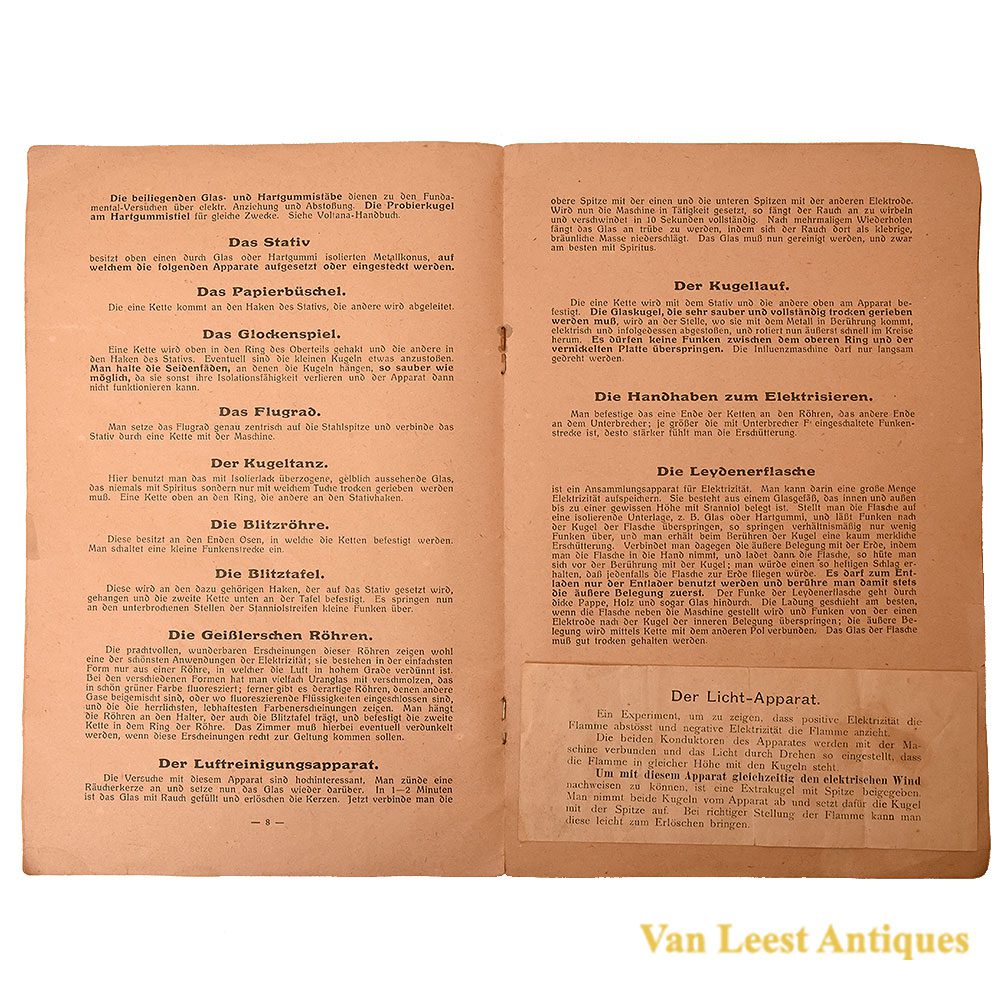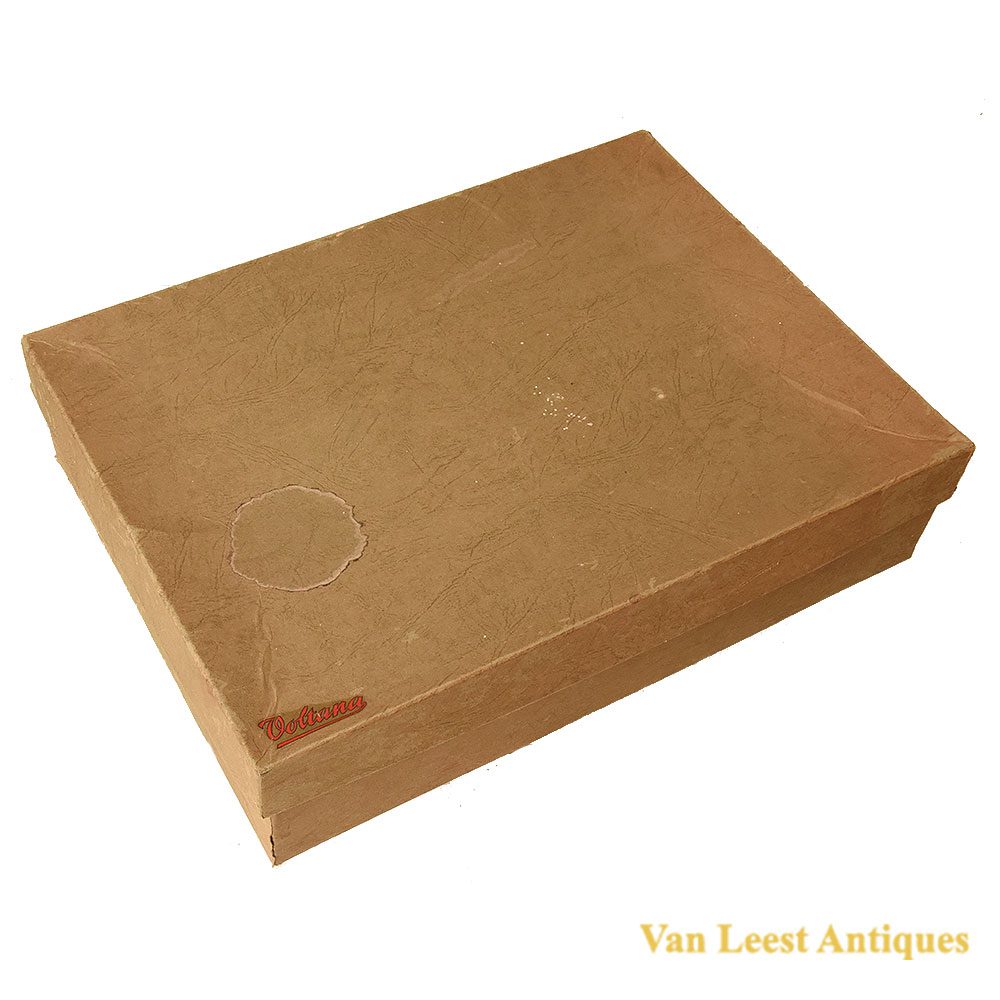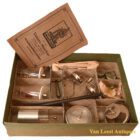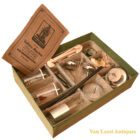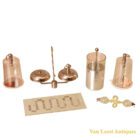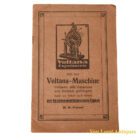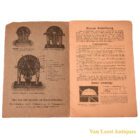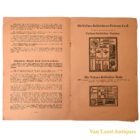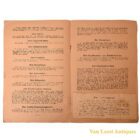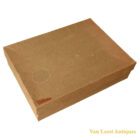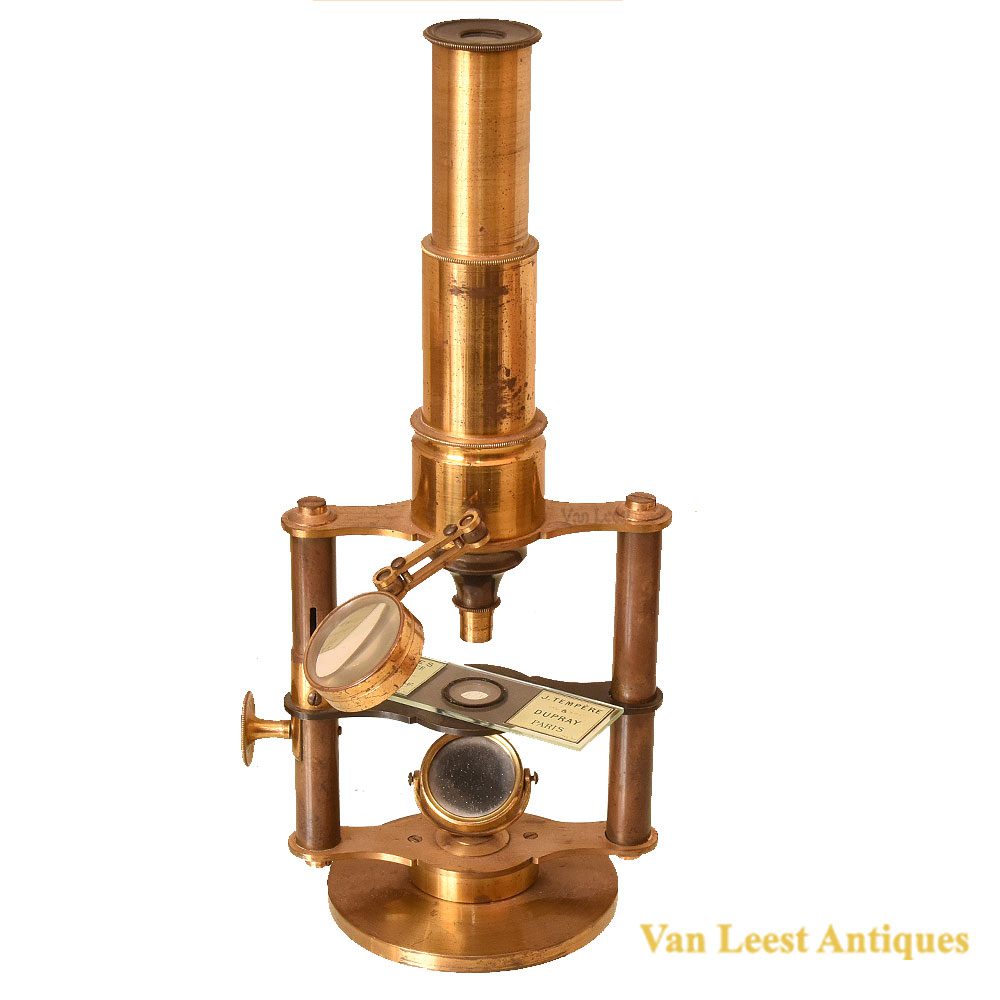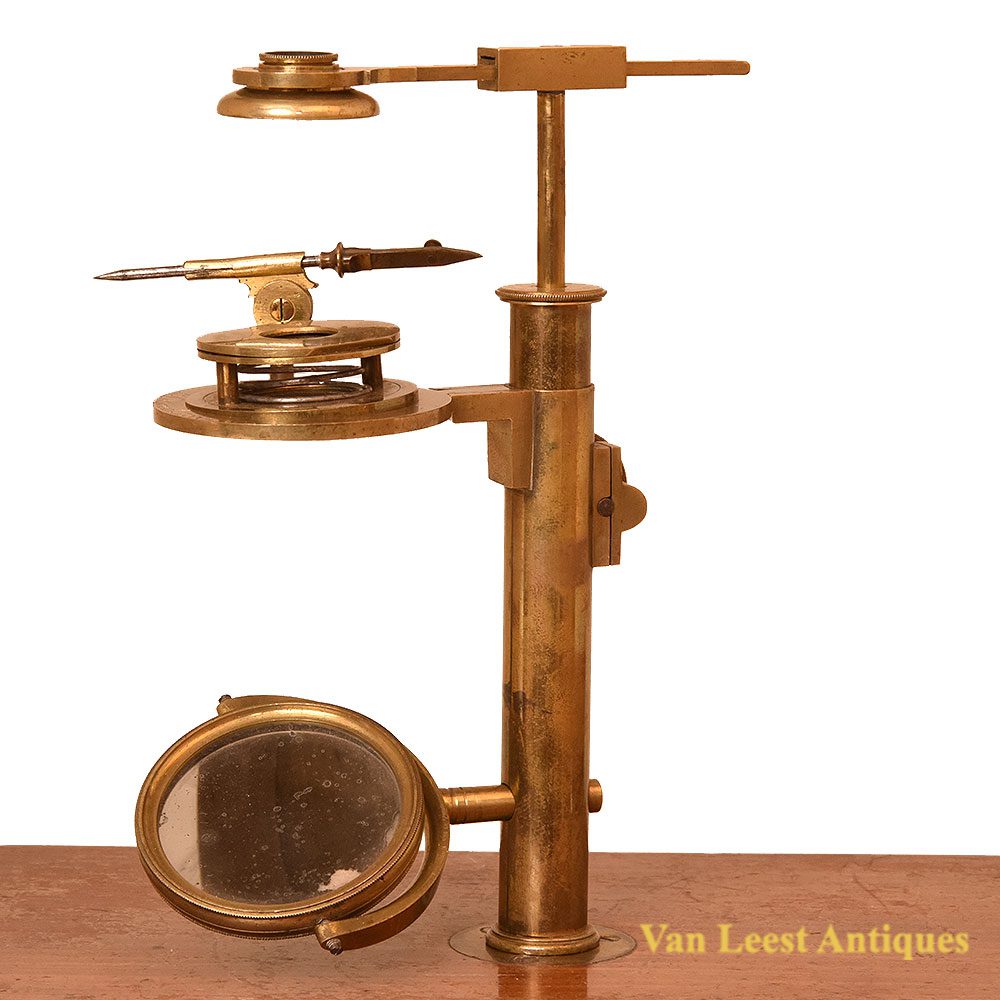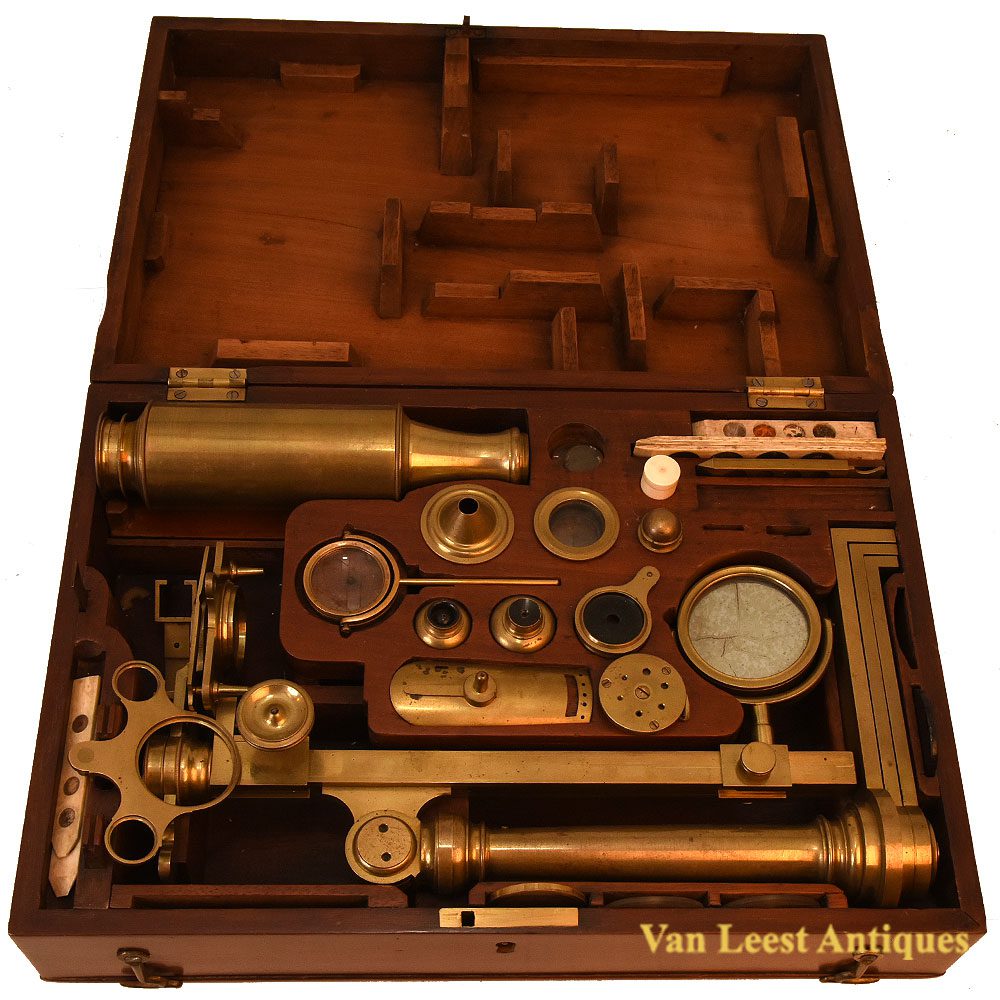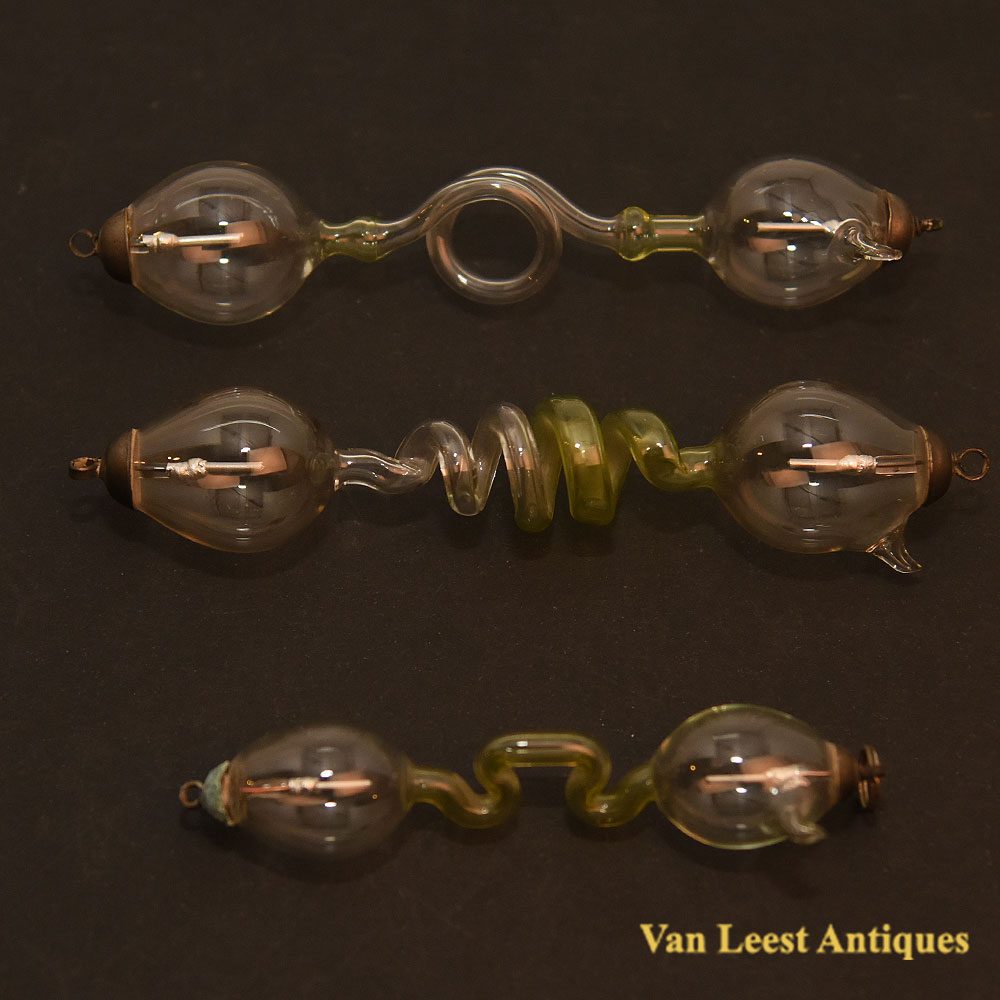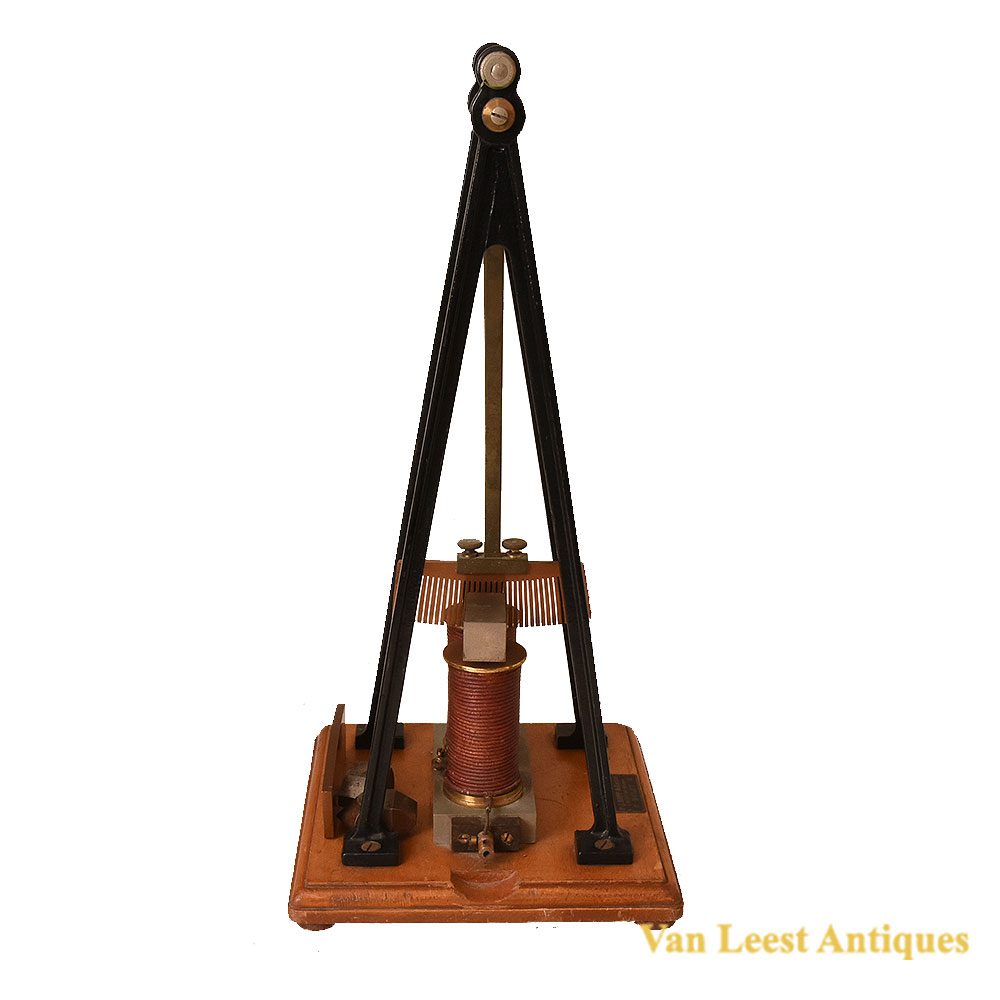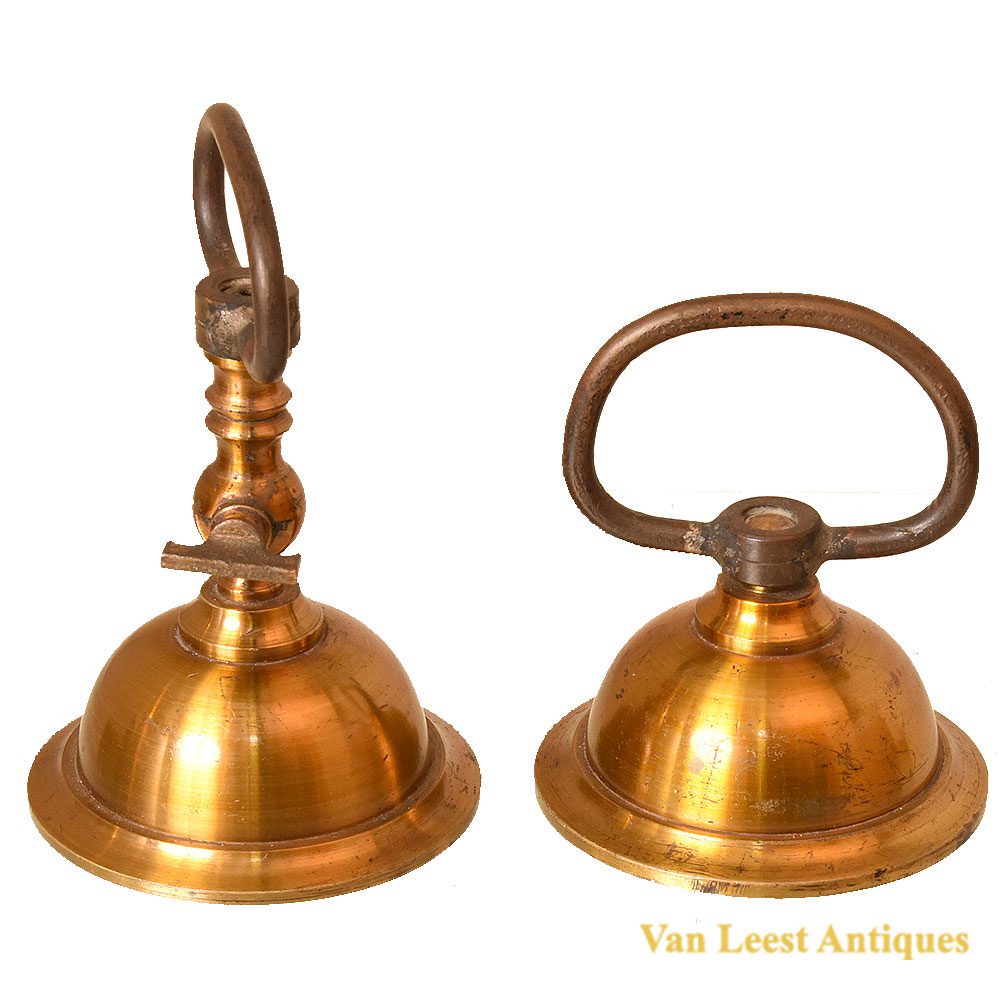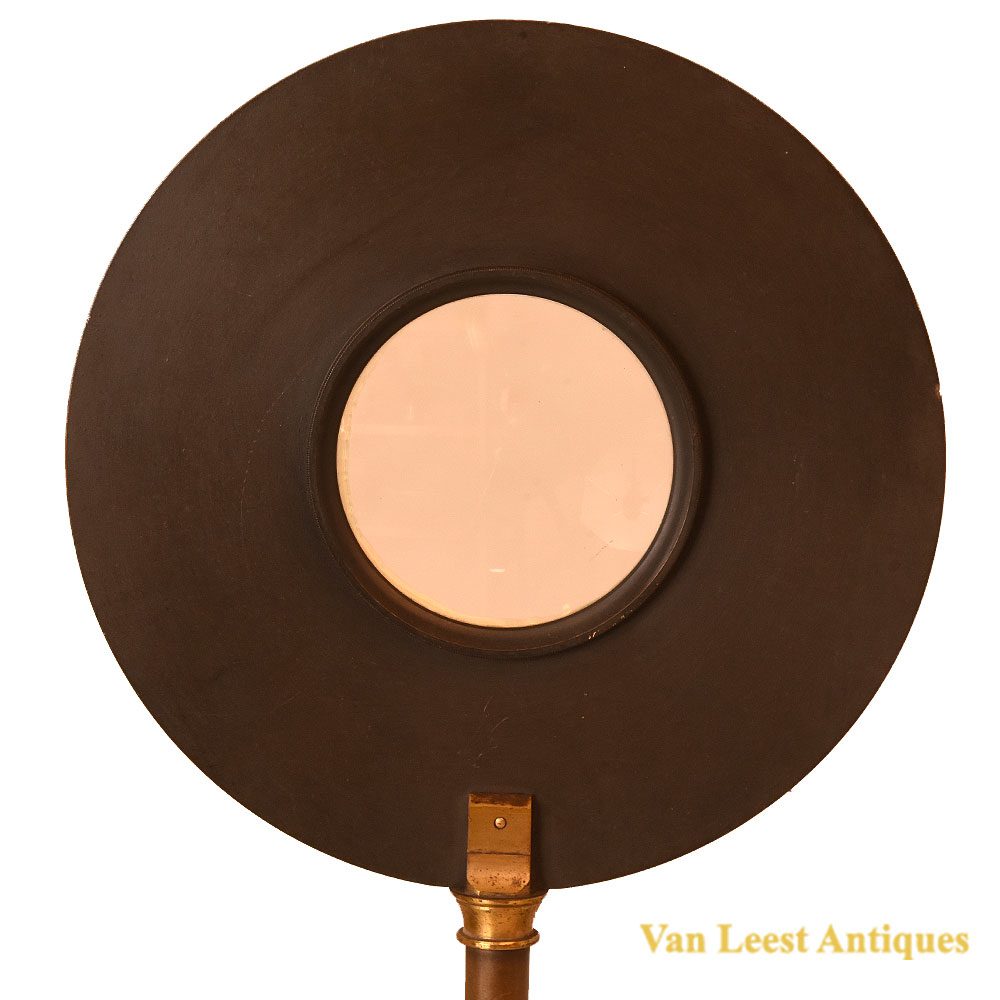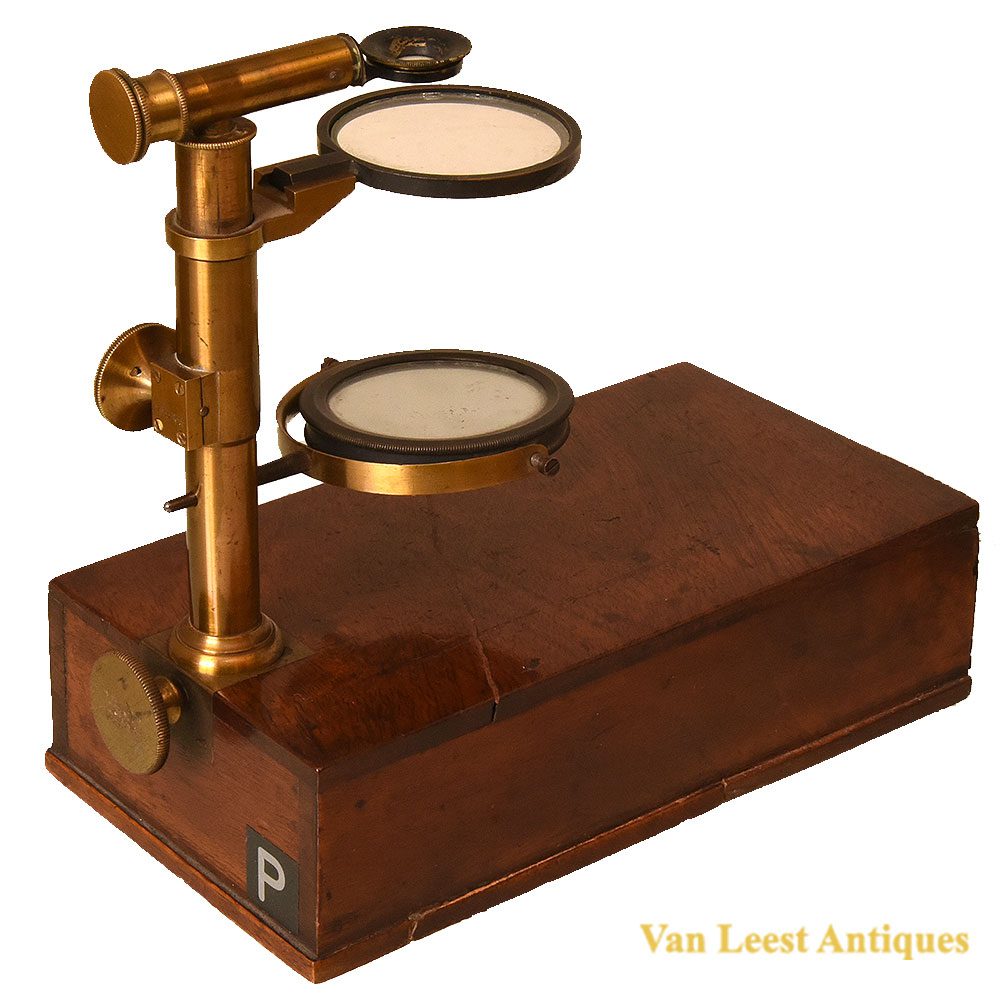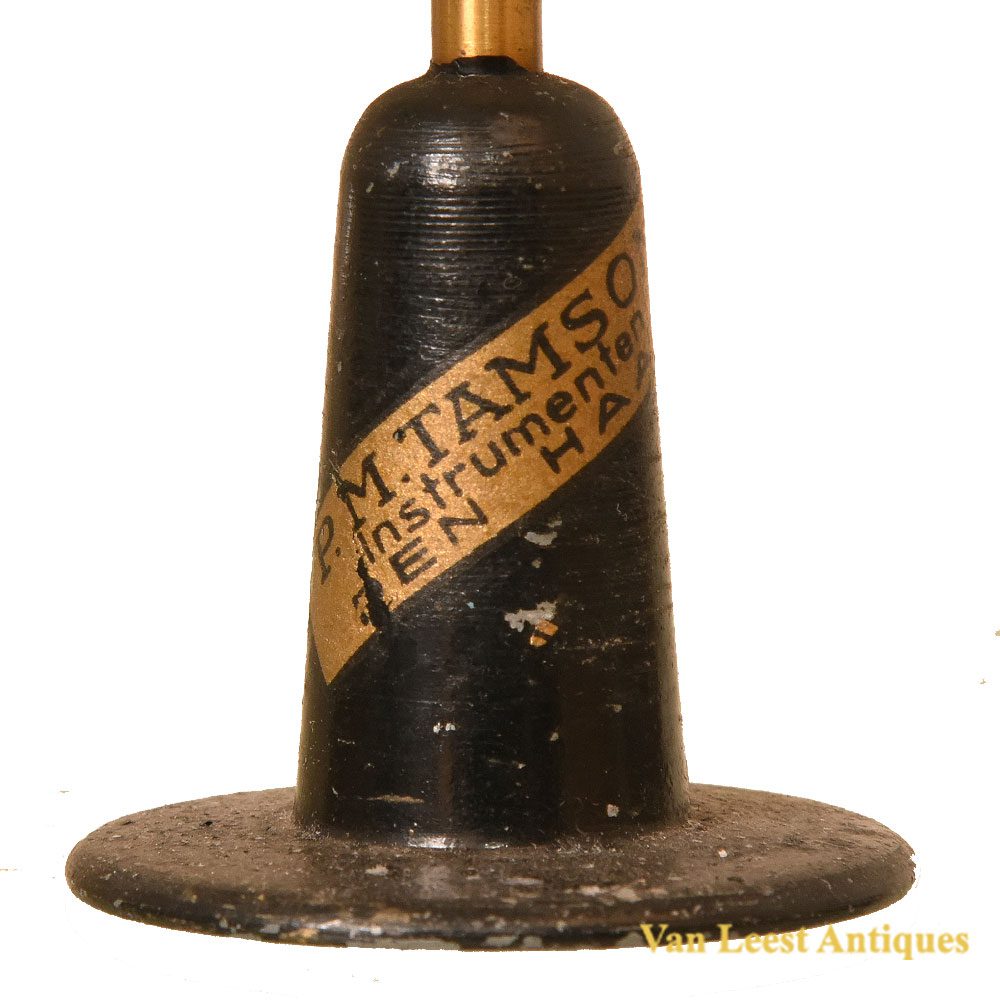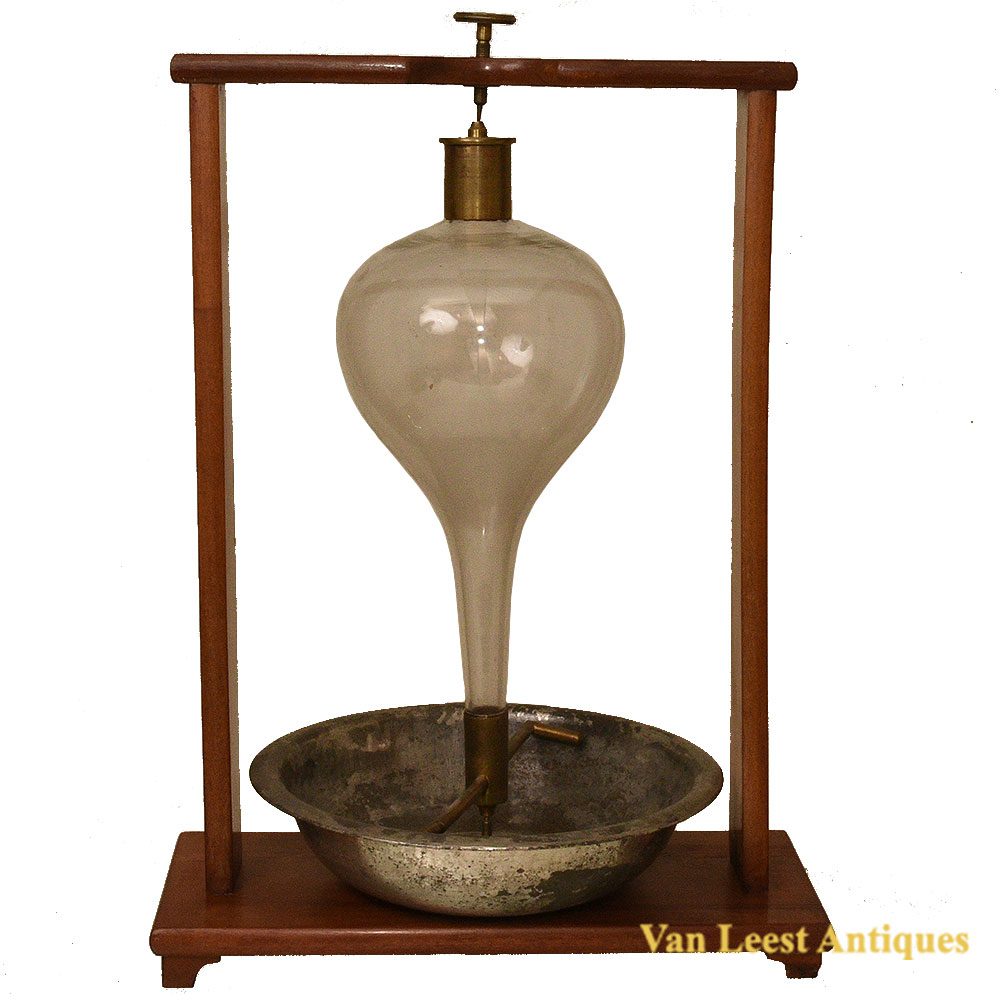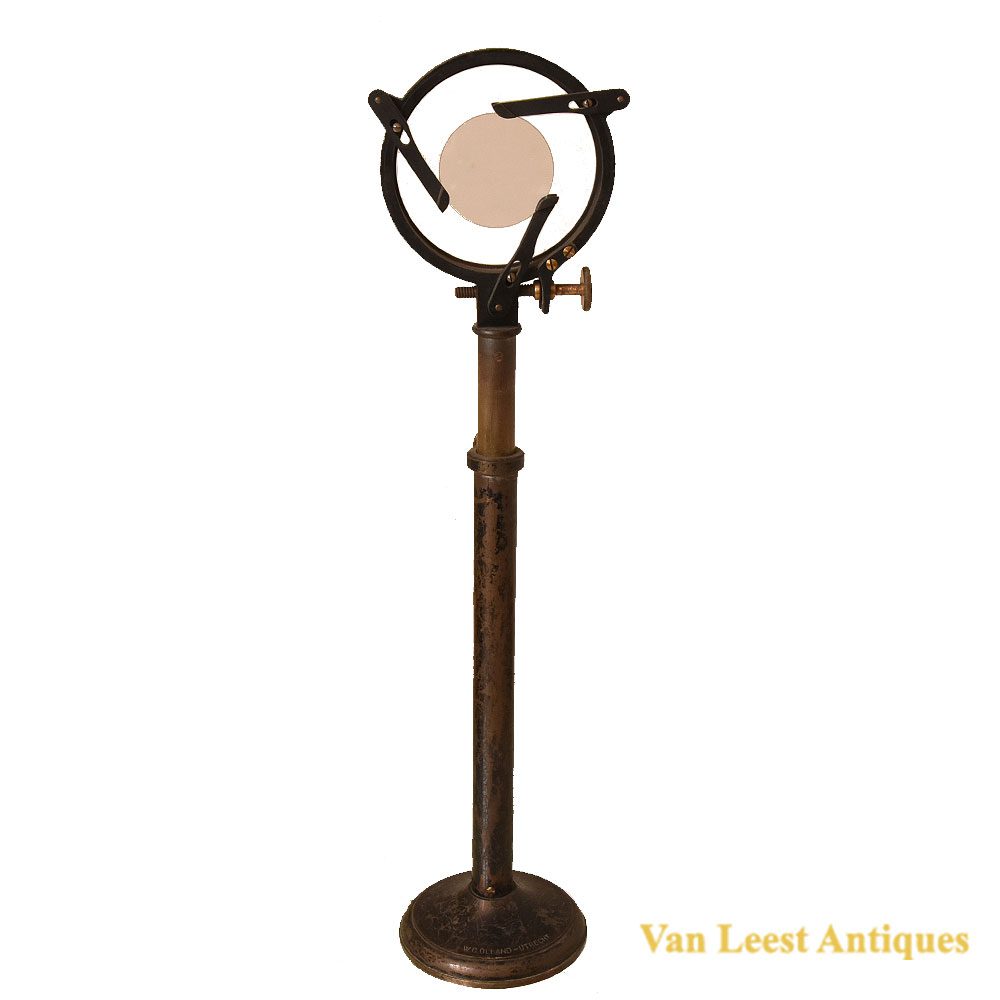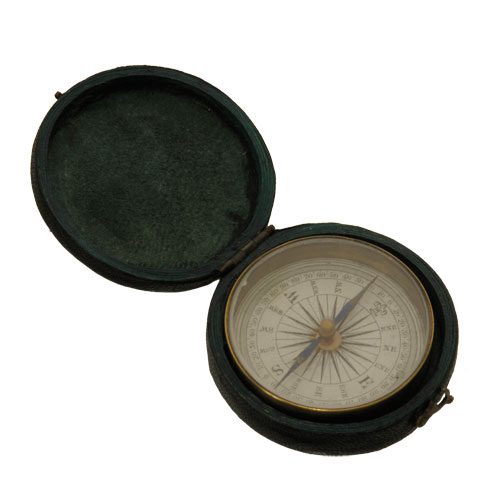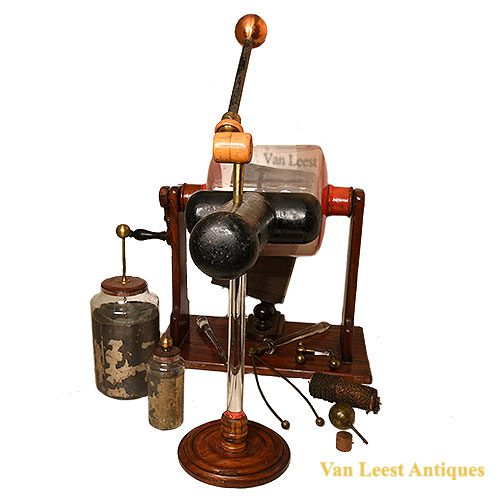Description
The Voltana collections Elektron and B. The illustration shows both combined in the Voltana collection Simplex. They possess the same apparatus as the above collection but in a coarser design. Collection ‘Klein Skola’ corresponds to Elektron A.
The accompanying glass and hard rubber rods are used for fundamental experiments on electrical attraction and repulsion. The test ball on the hard rubber stem serves the same purposes. See Voltana Handbook.
The stand has a metal cone at the top, insulated by glass or hard rubber, on which the following apparatuses are placed or inserted.
The stand
has a metal cone at the top, isolated by glass or hard rubber, on which the following apparatuses are placed or inserted.
The paper bundle.
One chain is attached to the hook of the stand, and the other is grounded.
The carillon.
One chain is hooked onto the ring of the upper part, and the other onto the hook of the stand. If necessary, the small balls should be slightly bumped. Keep the silk threads on which the balls hang as clean as possible, as otherwise, they will lose their insulation ability, and the apparatus will not function properly.
The flywheel.
Place the flywheel precisely centrally on the steel tip and connect the stand to the machine with a chain.
The ball dance.
Here, the yellowish glass coated with insulating varnish is used, which must only be dried with a soft cloth and never with alcohol. One chain on the ring, the other on the stand hook.
The spark tube.
This has eyelets at the ends for attaching the chains. Turn on a small spark gap.
The spark board
This is hung on the corresponding hook placed on the stand, and the second chain is attached to the table below. Sparks now jump at the interrupted sections of the aluminium foil.
The Geissler tubes.
The magnificent, wonderful appearances of these tubes undoubtedly show one of the most beautiful applications of electricity; they consist in the simplest form only of a tube in which the air is highly diluted. In various forms, uranium glass is often used, which fluoresces in a beautiful green color; furthermore, there are such tubes to which other gases are mixed, or where fluorescent liquids are enclosed, showing the most magnificent, vivid color appearances. The tubes are hung on the holder, which also carries the spark board, and the second chain is fastened in the ring of the tube. The room may need to be darkened for these phenomena to be properly visible.
The air purifier.
Experiments with this apparatus are highly interesting. Light a incense stick and then place the glass over it. In 1-2 minutes, the glass will be filled with smoke, and the candles will go out. Now connect the upper tip with one electrode and the lower tips with the other electrode. When the machine is activated, the smoke begins to swirl and disappears completely in 10 seconds. After repeating several times, the glass begins to become cloudy as the smoke settles there as a sticky, brownish mass. The glass must now be cleaned, preferably with alcohol.
The ball run.
One chain is attached to the stand, and the other to the top of the apparatus. The glass ball, which must be cleaned very thoroughly and completely dried, is electrically repelled at the point where it comes into contact with the metal, and rotates extremely fast in a circle. No sparks should jump between the top ring and the nickel-plated plate. The influence machine must be turned slowly.
Handling for electrification.
Attach one end of the chains to the tubes and the other end to the interrupter; the coarser the spark gap activated with interrupter F, the stronger the vibration felt.
The Leyden jar.
It is an accumulation device for electricity. It can store a large amount of electricity. It consists of a glass vessel, which is covered inside and outside up to a certain height with foil. If the bottle is placed on an insulating surface, e.g., glass or hard rubber, and sparks jump to the ball of the bottle, relatively few sparks jump, and when touching the ball, one receives hardly noticeable vibration. On the other hand, if the outer coating is connected to the earth by holding the bottle in hand, and then charging the bottle, one must avoid touching the ball; one would receive such a violent shock that the bottle would fly to the ground in any case. Only the discharger should be used for discharging, and always touch the outer coating first. The spark of the Leyden jar goes through thick cardboard, wood, and even glass. Charging is best done when the bottle is placed next to the machine and sparks jump from one electrode to the ball of the inner coating; the outer coating is connected to the other pole by means of a chain. The glass of the bottle must be kept dry.
The light apparatus.
An experiment to show that positive electricity repels the flame and negative electricity attracts the flame. The two conductors of the apparatus are connected to the machine, and the light is adjusted by turning it so that the flame is at the same height as the balls. To simultaneously demonstrate the electric wind with this apparatus, an extra ball with a tip is provided. Remove both balls from the apparatus and replace them with the ball with the tip. With the flame properly positioned, it can easily be extinguished.
Original German Text:
Die abbildung zeigt beide vereinigt in Voltana-Kollektion Simplex. Besitzt dieselben Apparate wie vorstehende Kollektion in gröberer Ausfrung Kollektion ‘Klein Skola’entspricht Elektron A.
Die beiliegenden Glas- und Hartgummistäbe dienen zu den funda0mental-Versuchen über elektr. Anziehung und Abstoßung. Die Probierkugel am Hartgummistiel für gleiche Zwecke. Siehe Voltana-Handbuch.
Das Stativ
besitzt oben einen durch Glas oder Hartgummi isolierten Metallkonus, auf welchem die folgenden Apparate aufgesetzt oder eingesteckt werden.
Das Papierbüschel.
Die eine Kette kommt an den Haken des Stativs, die andere wird abgeleitet.
Das Glockenspiel.
Eine Kette wird oben in den Ring des Oberteils gehakt und die andere in den Haken des Stativs. Eventuell sind die kleinen Kugeln etwas anzustoßen. Man halte die Seidenfäden, an denen die Kugeln hängen, so sauber wie möglich, da die sonst ihre Isolationsfähigkeit verlieren und der Apparat dann nicht funktionieren kann.
Das Flugrad.
Man setze das Flugrad genau zentrisch auf die Stahlspitze und verbinde das Stativ durch eine Kette mit der Maschine.
Der Kugeltanz
Hier benutzt man das mit Isolierlack überzogene, gelblich aussehende Glas, das niemals mit Spiritus sondern nur mit weichem Tuche trocken gerieben werden muß. Eine Kette oben an den Ring, die andere an den Stativhaken.
Die Blitzröhre
Diese besitzt an den Enden Ösen, in welche die Ketten befestigt werden. Man schaltet eine kleine Funkenstrecke ein.
Die Blitztafel.
Diese wird an den dazu gehörigen Haken, der auf das Stativ gesetzt wird, gehangen und die zweite Kette unten an der Tafel befestigt. Es springen nun and den unterbrochenen Stellen der Stanniolstreifen kleine Funken über.
Die Geißlerschen Röhren
Die prachtvollen, wunderbaren Erscheinungen dieser Röhren zeigen wohl eine der schönsten Anwendungen der Elektrizität; sie bestehen in der einfachsten Form nu raus einer Röhre, in welcher die Luft in hohem Grade verdünnt ist. Bei den verschiedenen Formen hat man vielfach Uranglas mit verschmolzen, das in schön grüner Farbe fluoresziert; ferner gibt es derartige röhren, denen andere Gase beigemischt sind, oder wo fluoreszierende Flüssigkeiten eingeschlossen sind, und die die herrlichsten, lebhaftesten Farbenerscheinungen zeigen. Man hängt die röhren an den Halter, der auch die Blitztafel trägt, und befestigt die zweite Kette in dem Ring der Röhre. Das Zimmer Muß hierbei eventuell verdunkelt werden, wenn diese Erscheinungen recht zur Geltung kommen sollen.
Der Luftreinigungsapparat.
Die Versuche mit diesem Apparat sind hochinteressant. Man zünde eine Räucherkerze an und setze nun das Glas wiederdarüber. In 1-2 Minuten ist das Glas mit Rauch gefüllt und erlöschen die Kerzen. Jetzt verbinde die obere Spitze mit der einen mit der einen und die unteren Spitzen mit der anderen Elektrode. Wird nun die Maschine in Tätigkeit gesetzt, so fängt der Rauch an zu wirbeln und verschwindet in 10 Sekunden vollständig. Nach mehrmaligem Wiederholen fängt das Glas an trübe zu werden, indem sich der Rauch dort als klebrige, bräunliche Masse niederschlägt. Das Glas muß nun gereinigt werden, und zwar am besten mit Spiritus.
Der Kugellauf.
Die eine Kette wird mit dem Stativ und die andere oben am Apparat befestigt. Die Glaskugel, die sehr sauber und vollständig trocken gerieben werden muß, wird an der Stelle, wo sie mit dem Metall in Berührung kommt, elektrisch und infolgedessen abgestoßen, und rotiert nun äußerst schnell im Kreise herum. Es dürfen keine Funken zwischen dem oberen Ring und der vernickelten Plate überspringen. Die Influenzmaschine darf nur langsam gedreht werden.
Die handhaben zum Elektrisieren
Man befestige das eine Ende der Ketten an den Röhren, das andere Ende an dem Unterbrecher; je gröber die mit Unterbrecher F eingeschaltete Funkenstrecke ist, desto stärker fühlt man die Erschütterung.
Die Leydenerflasche
ist ein Ansammlungsapparat für Elektrizität. Man kann darin eine große Menge Elektrizität aufspeichern. Sie besteht aus einem Glasgefäß, das innen und außen bis zu einer gewissen Höhe mit Stanniol belegt ist. Stellt man die Flasche auf eine isolierende Unterlage, z. B. Glas oder Hartgummi, und läßt Funken nach der Kugel der Flasche überspringen, so springen verhältnismäßig nur wenig Funken über, und man erhält beim Berühren der Kugel eine Kaum merkliche Erschütterung. Verbindet man dagegen die äußere Belegung mit der Erde, indem man die Flasche in die Hand nimmt , und ladet dann die Flasche, s hüte man sich vor der Berührung mit der Kugel; man würde einen so heftigen Schlag erhalten, daß jedenfalls die Flasche zur Erde fliegen würde. Es darf zum Entladen nur der Entlader benutzt werden und berühre man damit stets die äuBere Belegung zuerst. Der Funke der Leydenerflasche geht durch dicke Pappe, Holz und sogar Glas hindurch. Die Ladung geschieht am besten, wenn die Flasche neben die Maschine gestellt wird und Funken von der einen Elektrode nach der Kugel der inneren Belegung überspringen; die äußere Belegung wird mittels Kette mit dem anderen Pol verbunden. Das Glas der Flasche muß gut trocken gehalten werden.
Der Licht-Apparat.
Ein Experiment, um zu zeigen, das positive Elektrizität die Flamme abstösst und negative Elektrizität die Flamme anzieht. Die beiden Konduktoren des Apparates werden mit der Maschine verbunden und das Licht durch Drehen so eingestellt, das die Flamme in gleicher Höhe mit den Kugeln steht.
Um mit diesem Apparat gleichzeitig den Elektrischen Wind nachweisen zu können, ist eine Extrakugel mit Spitze beigegeben. Man nimmt beide Kugeln vom Apparat ab und setzt dafür die Kugel mit der Spitze auf. Bei richtiger Stellung der Flamme
